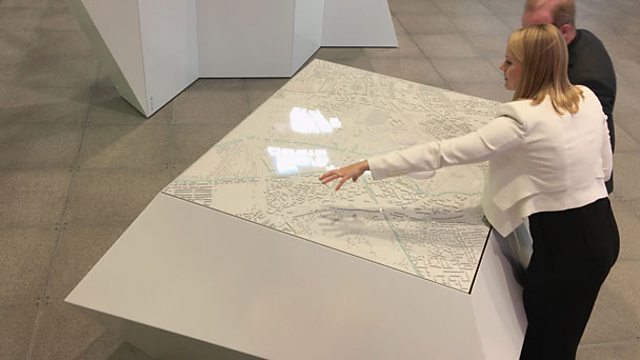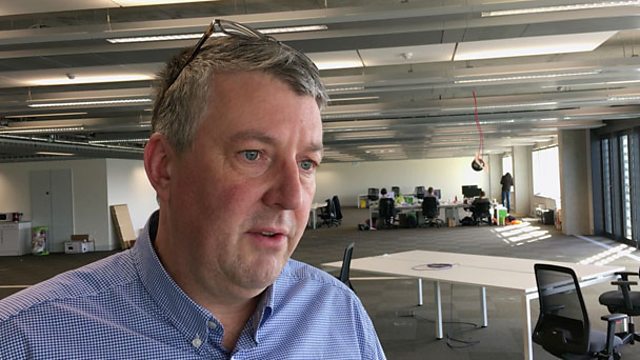With smartphones now capable of capturing quality video footage suitable for broadcast on network television, not every video package that makes it on air is filmed by a traditional camera crew.
Last month at the BBC, video innovation journalist Dougal Shaw and business correspondent Joe Lynam worked together to film a whole story on an iPhone 6S Plus, shown on BBC London’s 6pm and 10pm news bulletins on 30 October, alongside packages shot with bigger, more traditional equipment.
"We kept our eyes peeled for a good story that we could get on a news bulletin, but not so time-sensitive that we would feel under immense pressure doing it on a mobile phone," explained Shaw, who chose to cover the new hub for technology companies being unveiled at the Olympics site in East London.
"I wanted to prove that it could be done, and Joe wanted to learn mobile journalism (mojo) skills. As part of his career development, he wanted to be on top of all these things."
Story: A new technology hub unveiled at the site used for the Olympics in east London
Not only was the kit lighter and more portable, viewers didn't notice a difference in the video quality, and it encouraged BBC staff at regional newsrooms to ask Shaw for tips on doing it themselves. So what do journalists need to know in order to produce a news package for television with their smartphone?
Shaw, who has previously done a lot of experimenting with mojo techniques and equipment for the BBC, gave us his advice.
Experiment with your equipment
"There are so many extra things that you can do with a phone that you can't do with a normal camera," he said.
"Smartphones are light and small, so get interesting shots from high and low angles, tuck the camera in inaccessible places, put it on a tripod and lift it above you to get a birds-eye view, or use its camera features to shoot in slow-mo and add different effects."
Along with his iPhone 6S Plus, Shaw used an iOgrapher rig to hold and help stabilise the phone, along with a suite of lenses to film from different angles and shots.
"We showed off the huge space of the warehouse using wide angle lenses, well suited to filming the huge technology hub building," he said.
"Joe had lots of ideas about the shots he wanted and was impressed that the Filmic Pro app let you control the aperture and perform pull-focuses."

For recording audio, they used a Rode iXLR adapter and tie microphone during the interviews, but Lynam suggested that journalists are more than able to record quality voiceovers with the microphone on their iPhone.
"Joe uses his iPhone to record pieces for BBC Radio 4, by speaking into it about four inches away from the speaker, and either putting a towel or duvet over his head," said Shaw.
"When we wanted to record the voiceover for our news package, we were in a quiet studio with carpeted walls, so Joe spoke into the wall while recording, which dampened his voice.
"That's the bit that surprised me because I'd assumed it wouldn't be good enough for a voiceover, but you can actually get a very good sound out of the iPhone."
Anticipate the challenges you may have
Alongside the benefits of shooting with small and light equipment, there are also challenges, which should be taken into account before going out on a shoot.
"One of our interviewees was quite a tall guy, about 6 ft 5, and my tripod was not high enough for that," he said.
"It turned into a bit of a comedy situation, as I had to put my tripod on the table so we had enough height to film him, and Joe had to squat on the table to keep in eye line with the guy, which would then wobble the table and tripod every time he moved."
"The phone was also awkward to angle, as the lens of the camera isn't in the middle but on the side.
"The final result looked good but it was quite a bizarre situation and if I'd had a normal camera crew you would have had a tripod that could go much higher and the camera would have been easier to angle."

Of course, there are bigger tripods available, but he explained that the whole point of mobile journalism is to keep things small and compact, without the need to carry heavy equipment around.
"You want everything to sit in your rucksack," he said.
"If you suddenly buy all these accessories that then equal all the things in a normal camera kit, you are back to square one, which is you lugging around all this kit – you're always trying to keep it as simple as possible, without the fuss."
Additionally, the journalists tried to film a piece to camera in the sunshine, but as Shaw didn't have any neutral density filters for his phone, he couldn’t control the light well enough to shoot it with the Olympic stadium behind Lynam, and had to settle for a different angle instead.

Have the confidence to give it a go
"Overall, it is remarkably easy when you are used to it, but everyone has a lack of confidence at the beginning because they have this old-school way of thinking that TV is too complicated and technical to produce content for," said Shaw.
"It takes skill, but it's within your reach now. The tool you need is already in your pocket, and you're already familiar with it."
Shaw explained that for those starting out, it's wise to chose a story which is fairly slow moving, where the environment can be controlled.
"You can gradually build up your skill-set over time. Maybe start with producing a montage of vox pops, then go out and shoot some general shots, then record a voice over, and before you know it you'll be adding graphics and a piece to camera," he said.
"I think it should encourage newsrooms that don't have the budget to get camera kit or hire camera operators to actually put together a report good enough to go out on TV using just their phone and some kit that probably costs under £200."
However, he explained that although it's surprisingly easy to record a traditional news package with a mobile phone, he believes as more journalists begin to produce video with their mobiles, "they won't be making old-fashioned news reports like ours, with all the conventions of pieces to camera and sound bites.
"They will be doing Lives straight from their phones, video montages with graphics to tell the story, or they might film vertical or in square. The future news 'bulletin' will be completely different and it's up for grabs."
Free daily newsletter
If you like our news and feature articles, you can sign up to receive our free daily (Mon-Fri) email newsletter (mobile friendly).
Related articles
- New project InOldNews wants to improve representation in video journalism
- 38 mojo apps from BBC trainer Marc Blank-Settle
- 15 online communities for journalists you should know about
- Ukrainian journalists use smartphones to tell stories of displaced communities
- 10 video editing apps for mobile journalists










